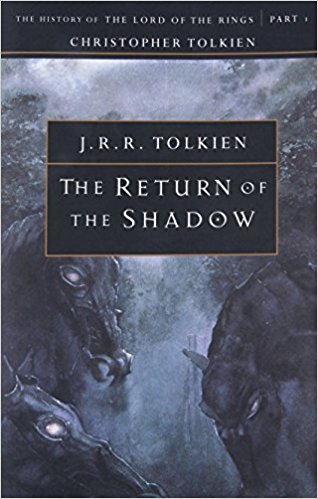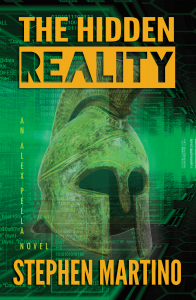Sometimes the updates on this blog are few and far in between and this update, in particular, is long overdue. The main focus of this entry is how I went back to the student loan well to fund my doctoral education, which ended in May 2018. In fact, the last update that I made to the Student Loans category of this blog was a note about how I was going back to school to get a doctorate and I posted that updated in June 2015.

Graduating from the USC Rossier School of Education last spring
Well, that doctoral program has come and gone and I absolutely loved it. Soon, I intend to post an entry talking about the tremendous experience that I had as part of the University of Southern California’s online doctoral program. It was amazing and really rewrote the entire online learning experience for me. Again, though, that story is for another time. This update is about student loans.
To start, I do not intend to write a series of updates about my student loan repayment experience like I did after I graduated from Monmouth University and Rutgers University some 10+ years ago. Writing about my on-going repayment of the $120,603.31 in student loans that I incurred getting a bachelor’s degree and master’s degree was fun, but I have already provided that type of content to this blog and I do not want to write about the same issue in the same manner again. Also, my personal circumstances during this repayment are much different than they were back in 2006 when I started that repayment program. When I started repaying my first set of loans back in July 2006, I did not even have a full-time job yet. Now, I have two full-time jobs and two thriving small businesses… so yeah, my situation is a little bit different.
What is also different is the amount of student loan debt that I needed to incur to complete the doctoral program. All in, I took on $89,286.86 in new student loans. This number is comprised of $87,360.16 in loan principal, $1,878.84 in capitalized interest, and $47.86 in closing and refinancing fees. For those of you keeping count, when you combine all of the student loan principal, capitalized interest, and closing and refinancing fees that I have had to pay off in my lifetime, that number is $209,890.17.
Pretty amazing, right?
Just for fun, if you want to add in the $28,851.81 that I have already paid in interest during the first set of student loans, then the total amount that I have repaid and am still tasked with repaying is $238,741.98.
In terms of repayment, the first set of student loans took me seven years and one month to repay in full. Those seven years did not necessarily go by quickly in terms of financial time. In other words, repaying those loans was brutal to a young professional just getting his career started – in the nonprofit sector no less. Today, my repayment plan is a little bit different as my first payments began in December 2018 and I expect to have these loans paid in full sometime around the end of 2020 or the beginning of 2021. My estimates are still somewhat off because I am unsure if I want to repay the loans earlier and, to be honest, I am contemplating a few different repayment structures that make more financial sense. Unfortunately, my income is at a point where I can no longer write off my student loan interest as a deduction on my taxes, so paying interest on the student loans really has no financial benefit at all.
But there are other ways to make student loan interest work for you. For example, I own a home now and I have a good deal of equity in the home. If I refinance my student loans into my mortgage, then the interest incurred on the increased amount of the mortgage loan would be tax deductible (up to a point, given the recent state and local Tax limits). Also, I could take out a loan from my 401k and repay my loans that way, too. By doing that, 100% of the interest paid on the 401k loan would go back into my 401k and I would earn all of the interest paid. Either one of these options seems like a better choice than just making payments on the student loans.
That is about it for this student loan update. Again, no regular updates on my repayment this time around, but I might post a random update here and there, so be on the lookout!

 Putting my own, initially incorrect approach to reading this book aside, if you are looking for a deep, highly detailed dive into the formation of Tolkien’s Middle-Earth, then this is it. The Return of the Shadow brings you to the very first drafts of The Lord of the Rings – to a world where the familiar foursome of hobbits that are the stars of the trilogy are not Frodo, Sam, Merry, and Pippin. Instead, the reader is treated to Faramond, Frodo, Merry, Odo, Folco, and a host of other hobbits that never made their way into starring roles in the final trilogy. The Return of the Shadow also takes its readers into the thought process behind Tolkien’s creation of iconic characters like Treebeard and Strider. Would you believe that in their first incarnations these well-known players in The Lord of the Rings were much different? For example, in Tolkien’s first draft, Treebeard was working in the service of Sauron. And Strider? He began as the hobbit Peregrin! And these characters are set in a Middle-Earth that includes a forgotten elvish land named Hollin, a Rohan that is still filled with horse lords – but whom are also working in the service of Sauron, and where Gondor is known as Ond.
Putting my own, initially incorrect approach to reading this book aside, if you are looking for a deep, highly detailed dive into the formation of Tolkien’s Middle-Earth, then this is it. The Return of the Shadow brings you to the very first drafts of The Lord of the Rings – to a world where the familiar foursome of hobbits that are the stars of the trilogy are not Frodo, Sam, Merry, and Pippin. Instead, the reader is treated to Faramond, Frodo, Merry, Odo, Folco, and a host of other hobbits that never made their way into starring roles in the final trilogy. The Return of the Shadow also takes its readers into the thought process behind Tolkien’s creation of iconic characters like Treebeard and Strider. Would you believe that in their first incarnations these well-known players in The Lord of the Rings were much different? For example, in Tolkien’s first draft, Treebeard was working in the service of Sauron. And Strider? He began as the hobbit Peregrin! And these characters are set in a Middle-Earth that includes a forgotten elvish land named Hollin, a Rohan that is still filled with horse lords – but whom are also working in the service of Sauron, and where Gondor is known as Ond. Fast-paced, action-packed storytelling aside, if you are looking for a novel that has compelling characters that you actually care about and can become emotionally-invested in as you read, then The Hidden Reality is your book. In fact, one of the primary reasons that I could not put this book down was because Martino writes characters that I could relate to and whose stories I wanted to read. His characters mean something to the plot and are not just throwaway placeholders or MacGuffins. Alex Pella, for example, is a hero that you want to cheer for; he’s someone that you want to see win in the end because he awakens the best parts of how we see ourselves. Putting aside the main character for a moment, the novel has additional characters who are absorbing – and for different reasons. Without giving away any of the major plot points, in the beginning of the novel a character named Jules laments to his fellow board members that their corporation is so large and so omnipresent in the lives of everyone on the planet that it has rendered humanity weak and somewhat mentally-stunted. He goes into a diatribe about people no longer having the fortitude or desire to rise up against these types of overwhelming power structures because they rarely think any more. As a reader, I found myself considering the many times that I have felt the same frustration as Jules. I thought about the times that I have passionately implored people to wake up to what is going on around them only to realize that I am stuck talking to people who are mostly wearing blank stares on their faces.
Fast-paced, action-packed storytelling aside, if you are looking for a novel that has compelling characters that you actually care about and can become emotionally-invested in as you read, then The Hidden Reality is your book. In fact, one of the primary reasons that I could not put this book down was because Martino writes characters that I could relate to and whose stories I wanted to read. His characters mean something to the plot and are not just throwaway placeholders or MacGuffins. Alex Pella, for example, is a hero that you want to cheer for; he’s someone that you want to see win in the end because he awakens the best parts of how we see ourselves. Putting aside the main character for a moment, the novel has additional characters who are absorbing – and for different reasons. Without giving away any of the major plot points, in the beginning of the novel a character named Jules laments to his fellow board members that their corporation is so large and so omnipresent in the lives of everyone on the planet that it has rendered humanity weak and somewhat mentally-stunted. He goes into a diatribe about people no longer having the fortitude or desire to rise up against these types of overwhelming power structures because they rarely think any more. As a reader, I found myself considering the many times that I have felt the same frustration as Jules. I thought about the times that I have passionately implored people to wake up to what is going on around them only to realize that I am stuck talking to people who are mostly wearing blank stares on their faces.